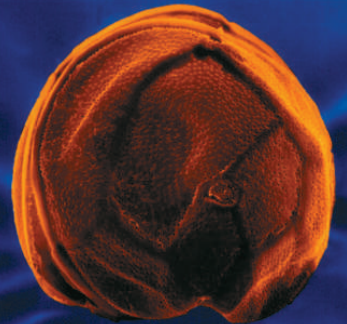
Protista
 المؤلف:
Margulis, L., J. O. Corlis, M. Melkonian, and D. J. Chapman
المؤلف:
Margulis, L., J. O. Corlis, M. Melkonian, and D. J. Chapman
 المصدر:
Handbook of Protoctista
المصدر:
Handbook of Protoctista
 الجزء والصفحة:
الجزء والصفحة:
 28-10-2015
28-10-2015
 3148
3148
Protista
The Protista, or Protoctista, are a kingdom of simple eukaryotic organisms, usually composed of a single cell or a colony of similar cells. Protists live in water, in moist terrestrial habitats, and as parasites and other symbionts in the bodies of multicellular eukaroytes.
Other eukaryotic kingdoms—the Plantae, Fungi, and Animalia—are each believed to be monophyletic. That is, all plants evolved from one ancestral plant, all animals from one ancestral animal, and all fungi from one ancestral fungus. The Protista, however, are not; they are almost certainly poly- phyletic and did not arise from a single ancestral protist. Rather, the Protista are a category of miscellaneous eukaryotes, not closely related to each other and not sharing many characteristics, but not fitting any other kingdom of life. Some authorities divide the Protista into as many as twenty-seven phyla, and some feel the Protista should be discarded as a kingdom name, and these organisms divided into as many as twelve kingdoms.

A scanning electron micrograph of the dinoflagellate Gambierdiscus toxicus
Historically, the Protista were divided into three main categories: the plantlike algae, animal-like protozoans, and funguslike slime molds. This classification persists in many elementary textbooks; however, current molecular evidence indicates that these are not natural groups related by common descent, but groups with merely superficial, deceptive similarities.
Classifying them together is probably no more scientific than it would be to classify bees, birds, and bats in one group simply because they all have wings and fly. The two flagellated protozoan groups called trypanosomes and dinoflagellates, for example, are probably less related to each other than a human is to a fish. Genetic evidence (base sequences in their mitochondrial deoxyribonucleic acid [mtDNA] and ribosomal ribonucleic acid [rRNA]) now indicates that the following are more natural (evolutionarily related) groups of Protista.
Basal Protista
These are the most primitive protists. Some lack mitochondria and suggest what the first eukaryotes may have been like, while others have primitive mitochondria that closely resemble bacteria. Some basal Protista without mitochondria are Trichomonas, a vaginal parasite of humans; Giardia, an intestinal parasite; and Entamoeba, the cause of amoebic dysentery. The lack of mitochondria is not necessarily the primitive (original) condition of all these protists, however. Although Giardia lacks mitochondria, it does have mitochondrial genes. Apparently it once had mitochondria, and these genes transferred to its nuclear DNA before the mitochondria were lost.
Basal Protista with mitochondria include Trypanosoma, a genus of blood parasites that cause African sleeping sickness and other diseases; Euglena, a green freshwater flagellated protozoan with chloroplasts; and Physarum, a common terrestrial slime mold.

Diatoms, unicellular algae encased in siliceous walls, often display delicate lacy designs.
Alveolates
Alveolates are named for flattened sacs called alveoli just beneath their plasma membranes. They have mitochondria with tubular cristae rather than the flattened cristae typical of most mitochondria. Alveolates include dinoflagellates, aquatic forms with two flagella and a cell wall made of armorlike cellulose plates; Paramecium and other familiar ciliates; and the Apicomplexa, a group of intracellular parasites that includes Plasmodium, the cause of malaria, and Toxoplasma, the cause of toxoplasmosis.
Stramenopiles
Stramenopiles include water molds, golden and brown algae, and diatoms. The funguslike water molds (oomycetes) live in fresh water and soil, feeding on living or decaying organisms. Despite their name, some of them are important pests of row crops, including potato blight, downy mildew, and white rust. The golden algae (Chrysophyta) and brown algae (Phaeo- phyta) include many familiar seaweeds easily found on rocky coasts. Kelp is a gigantic marine brown alga (Macrocystus) that grows up to 30 meters (100 feet) long and forms dense “forests” in some coastal waters. Diatoms are microscopic unicellular algae encased in siliceous (glasslike) walls, often with delicate lacy designs like tiny jewel boxes or Christmas ornaments.
Red Algae
The red algae (Rhodophyta) include most seaweed and are most abundant in tropical seas. Coral reefs are made not only by corals but also by corallin red algae that deposit calcium carbonate in the reef. Some red algae produce viscous polysaccharides such as agar and carrageenan, used to thicken ice cream, desserts, salad dressings, toothpaste, cosmetics, paints, and bacterial culture media.
Green Algae
The green algae (Chlorophyta) include the single-celled Chlamydomonas, the spherical colonies of Volvox, and large seaweeds such as Codium magnum. Some unicellular green algae, notably Chlorella, live within the cells of animals, imparting a green color to some sponges, hydras, and flatworms. The plant kingdom probably evolved from a green alga.
The Study of Protista
Biologists in several subdisciplines of biology specialize in the Protista or have interests that overlap with this kingdom. Microbiologists study bacteria and some unicellular protists. Phycologists specialize in algae. Protozoologists study protozoans. Mycologists specialize in fungi but also often study water molds and slime molds, formerly classified as fungi. Parasitologists study disease-producing protists.
References
Margulis, L., J. O. Corlis, M. Melkonian, and D. J. Chapman. Handbook of Protoctista, Boston: Jones & Bartlett, 1990.
Margulis, L., and K. Schwartz. The Five Kingdoms, 3rd ed. New York: W. H. Freeman and Company, 1998.
Patterson, D. J. “The Diversity of Eukaryotes.” American Naturalist 154 (1999): S96-S124.
 الاكثر قراءة في مواضيع عامة في علم الحيوان
الاكثر قراءة في مواضيع عامة في علم الحيوان
 اخر الاخبار
اخر الاخبار
اخبار العتبة العباسية المقدسة


